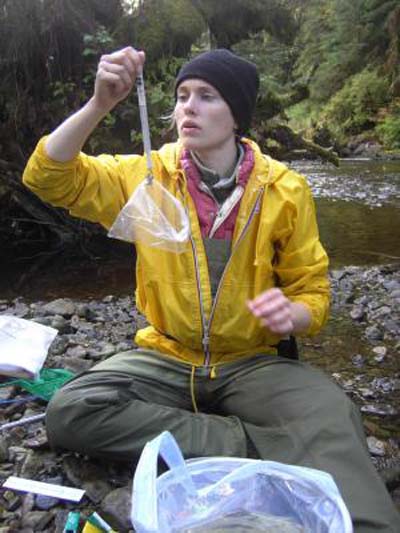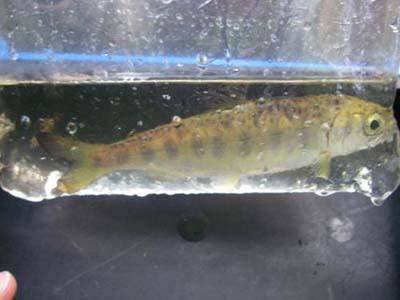 New research shows that juvenile coho abundance is up to three times higher in streams with abundant pink and chum compared to streams with none. Study shows juvenile coho salmon benefit from dining on the distant remains of their cousins
New research shows that juvenile coho abundance is up to three times higher in streams with abundant pink and chum compared to streams with none. Study shows juvenile coho salmon benefit from dining on the distant remains of their cousins
[dropcap]N[/dropcap]ewly published research co-authored by scientists at Simon Fraser University and the Raincoast Conservation Foundation shows juvenile coho salmon benefit from dining on the distant remains of their spawning pink and chum cousins.
While juvenile coho salmon feed directly on spawning pink and chum salmon carcasses and eggs, even coho with no direct contact with spawning pink and chum benefit from their nutrient contributions to stream ecosystems.
The new research shows that juvenile coho abundance is up to three times higher in streams with abundant pink and chum compared to streams with none.
John Reynolds, an SFU biologist, and Michelle Nelson, one of his doctoral students, have just had their paper Time-delayed subsidies: Interspecies population effects in salmon published in PLOS ONE, an international peer-reviewed journal.
The authors say their discovery underscores the importance of understanding how a fish’s nutrient legacy in streams and forest ecosystems affects species close and distant to them.
Study shows juvenile coho salmon benefit from dining on the distant remains of their cousins
SFU doctoral biology student Michelle Nelson spent five field seasons studying evidence that juvenile coho dine on nutrients rich with spawning pink and chum salmon remains in 25 streams in B.C.’s Great Bear Forest. Credit: Alison Page
The paper, which is one chapter of lead author Nelson’s thesis, says: “We found an indirect link between spawning pink and chum salmon, and juveniles of another species, coho.”
The carcasses of dead pink and chum salmon that have spawned in freshwater fertilize stream and forest ecosystems. The food web pathway may go from carcasses to algae to stream-insects and then to coho. Even more fascinating is a pathway that may go from carcasses to forest flies to coho.

SFU doctoral biology student Michelle Nelson spent five field seasons studying evidence that juvenile coho dine on nutrients rich with spawning pink and chum salmon remains in 25 streams in B.C.’s Great Bear Forest. Credit: Alison Page.
“We know this isn’t just because all three species benefit from being in nutrient-rich streams,” says Reynolds, SFU’s Tom Buell BC Leadership Chair in Salmon Conservation. “The habitat needs of pink, chum and coho are slightly different, and even taking habitats into account, the effects of coho dining on nutrients enriched by pink and chum remains are very clear.”
“I hope this will highlight to fisheries decision-makers the ecological benefits of robust populations of spawning salmon,” says Nelson. “Pink and chum salmon have less commercial and recreational value than coho. But their crucial contribution to stream ecosystems may benefit the health of coho populations.”
Reynolds adds: “These findings are relevant to many people, considering the strong interest and connection many have with salmon. It also speaks directly to the federal Department of Fisheries and Oceans’ commitment to incorporate a better understanding of salmon-ecosystem interactions into fisheries management to conserve and restore salmon abundance in our region.”








